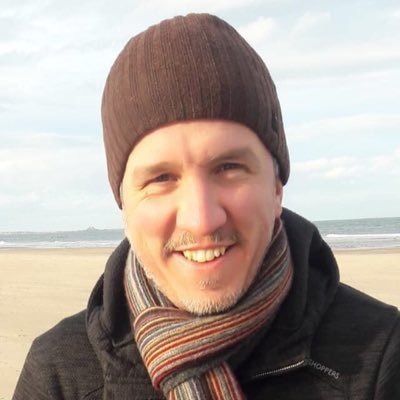About Me
Principal UX Consultant for TPGi, responsible for delivering the highest quality UX and strategy services to clients. I undertake accessibility testing and evaluation, training, user testing and research to ensure that websites, web applications and mobile apps are usable and accessible by everyone.
Current Projects
I am interested in aspects of user interface and user experience design that contribute to feelings of anxiety and panic. I have been exploring how we can avoid or reduce anxiety and panic triggers on the web to improve accessibility for people with anxiety and panic disorders.
For more information, see my blog post series A web of anxiety: accessibility for people with anxiety and panic disorders or view my slides from CSUN 2019, and slides from a11yTO 2022.
Formerly, I was an academic researcher in human-computer interaction at the University of York, where I gained over ten years' experience of designing, developing and evaluating usable and accessible interactive technologies.
There I achieved a PhD in Computer Science, investigating how to integrate accessible web development practices into the existing workflows of professional web developers.
Former Projects
Worked on Co-Motion, a £1.2m three-year 'Design for Wellbeing' project investigating the links between mobility and wellbeing in older people. Engaged in participatory design methods and rapid prototyping to develop a mobile app for promoting physical activity in older people.
Undertook a field study evaluation of a mobile app for allowing visually impaired people to navigate the "last ten yards" to their destination. The OptiNav project was funded by the Government's Technology Strategy Board (now Innovate UK).
Developed a "Virtual Workbench" web app for allowing historians to explore medieval charters. Part of the ChartEx project, which was an interdisciplinary and international collaboration between historians and computer scientists in Europe and the US.
Conducted contextual inquiries with web developers from across Europe to examine current practices in relation to web accessibility. Part of the €2.7m EU-funded i2Web project, which developed tools for creating and evaluating accessible websites.
Administered a large online survey with students and educational professionals from across Europe. Delivered training in using the W3C Web Content Accessibility Guidelines to professional web developers. Part of the €10.5m EU-funded EU4ALL project, which developed ways to support disabled and older people in education using virtual learning environments and other information and communication technologies.
Selected Publications
- Swallow, D., Petrie, H., Power, C., & Edwards, A.D. (2015). Using Photo Diaries to Elicit User Requirements from Older Adults: A Case Study on Mobility Barriers. In Human-Computer Interaction–INTERACT 2015 (pp. 147-164). Springer International Publishing.
- Swallow, D., Power, C., Petrie, H., Bramwell-Dicks, A., Buykx, L., Velasco, C.A., Parr, A., & Connor, J.O. (2014). Speaking the Language of Web Developers: Evaluation of a Web Accessibility Information Resource (WebAIR). In Computers Helping People with Special Needs (pp. 348-355). Springer International Publishing.
- Swallow, D., Blythe, M., & Wright, P. (2005). Grounding experience: relating theory and method to evaluate the user experience of smartphones. In Proceedings of the 2005 annual conference on European association of cognitive ergonomics (pp. 91-98). University of Athens.
- For a full list of publications, visit my Google Scholar profile.
Prior to that, I was a web developer, creating usable and accessible websites for property professionals (most of which have now fallen off the web).
I am currently a parent governor at Dunnington Church of England Primary School, contributing to school governance and working with staff and fellow governors to guide the school’s development.
Until recently, I was a councillor for the parish of Dunnington, leading the communications group and overseeing the parish website and council communications.
I served as secretary and trustee for York Fighting Coronavirus Together (YFCT) until its dissolution in August 2023, supporting local COVID-19 response efforts and coordinating with public bodies, businesses, charities, and community groups across York.




